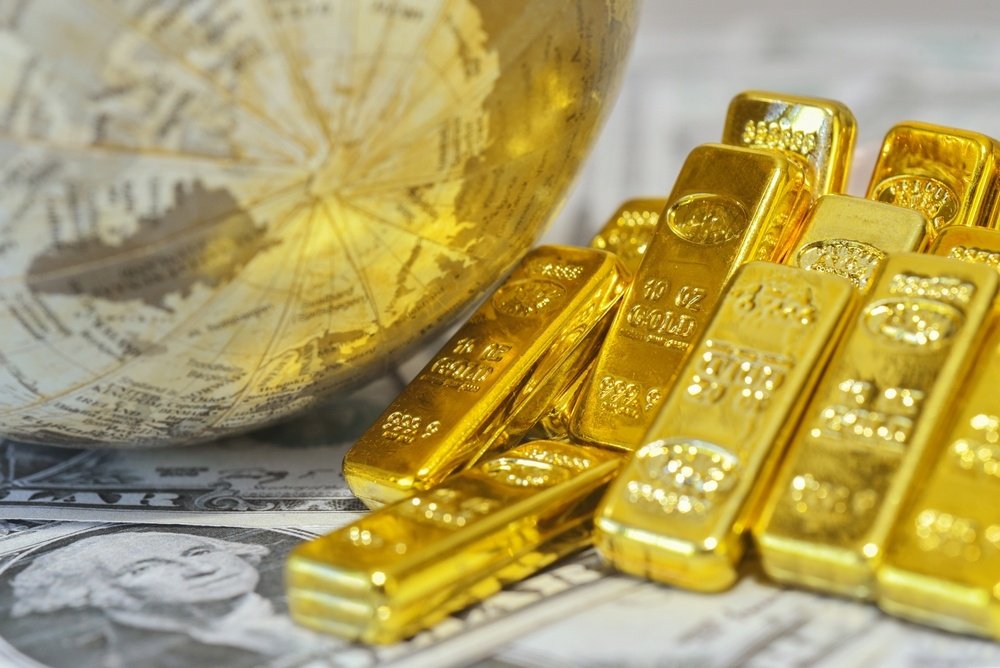Central Banks Trading Dollars for Gold: A Global Trend
With the world becoming more and more unpredictable, central banks worldwide are increasingly trading U.S. dollars for gold. There are several compelling reasons behind this shift. By delving into these specifics, we can gain a clearer understanding of how this could influence the price of gold.
Russia
Russia has been at the forefront of this movement, and its central bank has significantly ramped up its gold purchases. They have increased its daily gold acquisition by 700%. This strategy is part of a broader effort to reduce reliance on the U.S. dollar, driven by geopolitical tensions and economic sanctions stemming from the conflict in Ukraine. By holding gold, Russia aims to safeguard its economy from external shocks and assert greater financial independence.
Turkey
Turkey has significantly increased its gold reserves, reaching an all-time high of 584.93 tonnes in the second quarter. This aggressive expansion is part of a strategic move to diversify its foreign exchange reserves and hedge against geopolitical risks. Since 2016, the Turkish Central Bank has added nearly 300 tonnes of gold to its holdings and 14.63 tonnes in 2024 alone.
India
In 2024, India has significantly increased its gold reserves, with the Reserve Bank of India (RBI) purchasing nearly 13.3 tonnes of gold in the first two months of the year. This move is part of a broader strategy to diversify its foreign exchange reserves and hedge against inflation. The RBI’s gold purchases have contributed to a $3 billion rise in forex reserves, reaching $648.5 billion
China
In 2024, China has continued its aggressive gold-buying spree, with the People’s Bank of China (PBOC) purchasing an additional 18 tonnes of gold in the first quarter alone. This move is part of a broader strategy to diversify its reserves and reduce reliance on the U.S. dollar amid ongoing global economic uncertainties. China’s central bank has been transparent about its gold-buying activities, signaling a strategic shift towards greater financial security.
The Case for Trading Dollars for Gold
There are several reasons why central banks are opting for gold over the dollar. First, gold is a tangible asset with intrinsic value, unlike fiat currencies, which can be subject to inflation and devaluation. Second, gold acts as a hedge against economic instability and geopolitical risks. Third, gold’s liquidity and universal acceptance make it a versatile reserve asset.
De-Dollarization Movement
This trend is part of a broader de-dollarization movement in which countries seek to reduce their reliance on the U.S. dollar. By diversifying their reserves with gold, these nations aim to protect their economies from potential dollar fluctuations and economic sanctions. As Americans, it is easy to become self absorbed and internally focused.. However, the world is quickly moving away from the dollar and towards gold. As the dollar becomes less demanded, it will become inflated even more than it already has.
Trading for Gold’s Impact on Prices
As more central banks buy gold, the demand for this precious metal increases, driving up its price. This trend is likely to continue as geopolitical tensions and economic uncertainties persist. For people like you and me, this means gold could become an even more attractive asset, potentially leading to higher prices. Remember, as the dollar continues to lose value through inflation, the price of gold continues to rise.
Future Outlook
Looking ahead, the demand for gold is expected to remain strong. Central banks’ continued shift towards gold is likely to keep prices elevated, making it a valuable asset for both national reserves and individuals.
The trend of central banks trading dollars for gold is driven by a desire for greater economic security and diversification. As this movement gains momentum, it has the potential to drive gold prices even higher.
The post Trading Dollars for Gold: A Global Trend appeared first on Fisher Precious Metals.





